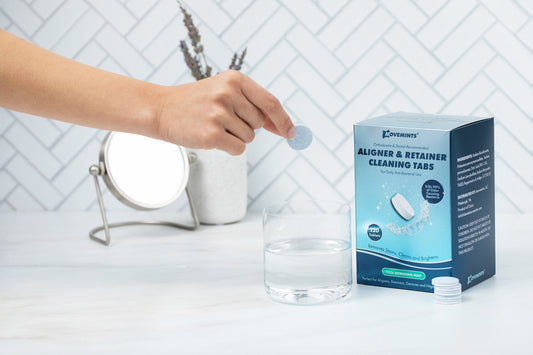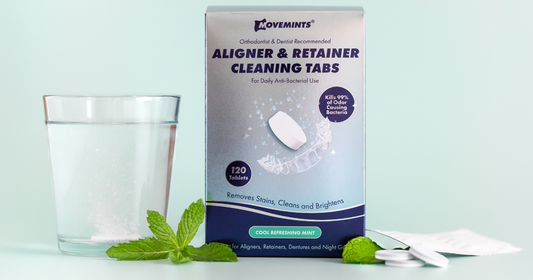What is IPR and How is It Used for Invisalign?
Discover how IPR will help you along your Invisalign journey
 If your orthodontist has recommended IPR for Invisalign, then you probably have a few questions about the process. IPR is a common procedure that is used by orthodontists for several different reasons, but is most commonly used to prepare an individual to straighten their teeth using clear aligners. IPR stands for interproximal reduction, which means that the process reduces the enamel on your teeth to help remedy overcrowding. Today we’re going to be answering the most popular questions patients have before undergoing IPR for Invisalign. Let’s get started!
If your orthodontist has recommended IPR for Invisalign, then you probably have a few questions about the process. IPR is a common procedure that is used by orthodontists for several different reasons, but is most commonly used to prepare an individual to straighten their teeth using clear aligners. IPR stands for interproximal reduction, which means that the process reduces the enamel on your teeth to help remedy overcrowding. Today we’re going to be answering the most popular questions patients have before undergoing IPR for Invisalign. Let’s get started!
Why Do I Need IPR for Invisalign?
Your orthodontist may recommend IPR if you are a good candidate for Invisalign but are experiencing crowding
 IPR helps Invisalign trays move your teeth over time.
IPR helps Invisalign trays move your teeth over time.
Your Invisalign journey will not be the same as everyone else’s. Why? Because everyone has different orthodontic needs when they pursue Invisalign. Some people have issues with their bite, crowding, tooth rotation, overbite/underbite, or other issues that will need to be corrected to achieve that perfect smile. In the same way, some patients may have to get Invisalign attachments put on their teeth if their teeth are rotated, some people have to undergo IPR if their teeth are overcrowded.
What Does IPR Entail?
Find out how an IPR for Invisalign will help you get your best smile
 IPR gives your teeth room to move into their correct position.
IPR gives your teeth room to move into their correct position.
When your orthodontist recommends IPR for Invisalign, they’ll start by describing the process and how it works. IPR is also known as an enamel reduction. The process involves rubbing the enamel with fine material. This material could be compared to a minute piece of sandpaper, and is used to remove portions of your outer enamel to create more space for your teeth to move.
Though this process may sound a little bit frightening, the procedure is actually painless and only removes about .2 or .3 millimeters of your outer enamel. During the procedure, your orthodontist may also use other tools to ensure that your teeth have enough room to move when you begin your Invisalign journey. After that, your IPR for Invisalign is complete and you are ready to start straightening your teeth. Keep in mind that it is common that a few of your teeth will require IPR before you get started, not just one.
How Does IPR for Invisalign Help Move Teeth?
Now we know how the process works, it’s time to explore the orthodontic benefits of IPR for Invisalign
 Sanding your enamel is a routine and painless process.
Sanding your enamel is a routine and painless process.
Teeth crowding is a big issue for a lot of people who are looking to straighten their teeth. When your teeth are too close together, it becomes impossible for them to move to their desired position. That’s where IPR for Invisalign can help. The .2 to .3 millimeters of enamel that is removed will allow enough room for your invisible aligners to move your teeth.
Without undergoing IPR, many people are no longer viable candidates for Invisalign and will need braces to straighten their teeth instead. That does not mean that braces wearers do not need IPR, in many cases they do. Rather, Invisalign can only do so much when it comes to overcrowding, and IPR is often the easiest remedy. If you are experiencing severe overcrowding, your orthodontist may recommend metal braces over Invisalign.
Are There Alternatives to IPR?
IPR is often the least invasive way to make room for your teeth to move
 IPR is often the best solution for teeth crowding.
IPR is often the best solution for teeth crowding.
If your orthodontist determines that your level of teeth crowding requires braces, then you won’t have to undergo IPR for Invisalign. However, there is still a possibility that you will need IPR before you get your braces put on.
The other option to make space for your teeth to move is tooth extraction. Given the option between IPR and tooth extraction, many people will prefer IPR as it is far less invasive. It is also possible that even after undergoing a tooth extraction, you will still need IPR on other teeth to ensure that either braces or Invisalign can move your teeth into their correct position.
Which Option is Best for Me?
Only your orthodontist can determine which of the few options we’ve presented is right for you
 Most people will choose IPR over the alternatives.
Most people will choose IPR over the alternatives.
Does Invisalign work without IPR? While the answer depends on your individual smile, here’s the bottom line: IPR is a safe and effective way to make space to straighten your teeth and get you closer to your perfect smile. No matter whether you are using Invisalign or metal braces to straighten your teeth, IPR can help your teeth move more easily into place and helps prevent issues that can lead to Invisalign refinements later in your treatment. In every case, your orthodontist will recommend IPR over tooth extraction, unless extraction is necessary due to severe crowding.
Understandably, some of these procedures can be nerve-wracking, but now that you know more about IPR hopefully the process isn’t so scary.





